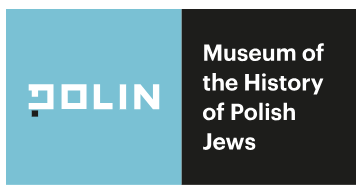POLIN
Museum of the History of Polish Jews I Muzeum Historii Żydów Polskich

To preserve and recall the memory of the history of Polish Jews and to counteract antisemitism, discrimination, and exclusion by fostering mutual understanding and respect.
Situated at a site of great historical significance, we feel a moral responsibility to present the complex history of Polish Jews as relevant today, and as a source of profound, transformative experience.
We want the Museum to be critical, accessible and collaborative.
Mission Statement
The POLIN Museum of the History of Polish Jews stands in what was once the heart of Jewish Warsaw, an area which the Germans turned into a ghetto during World War II. Its modern building faces the Monument to the Ghetto Heroes, thus creating a unique space for remembrance and reflection. The Monument pays tribute to the struggle and suffering of Polish Jews, while the POLIN Museum recalls their history, showing also that the Holocaust—contrary to the criminal intentions of its organizers—did not mark the end of Jewish life and culture in Poland.
At the heart of the POLIN Museum is the Core Exhibition, a journey through the 1000-year history of Polish Jews, narrated from different perspectives, in many voices. Through this journey we hope to offer our visitors a transformative experience, so that the history of Polish Jews becomes as meaningful and vivid to them as their own.
Our goal is to raise historical awareness and highlight the relevance of the past for understanding the present and shaping the future. We believe that exposure to the rich and dramatic history of Polish Jews helps develop empathy and respect for people of different religions and cultures. We want as vast a swath of the public as possible to discover a deeper, unadulterated picture of Polish-Jewish relations.
These goals are especially important today as we witness a surge of antisemitism, reaching levels not seen in Poland since March ’68. We are confronted with the rise of xenophobia, ethnonationalism, brutalization of public debate, and the normalization of hate speech, especially on social media. Antisemitic and racist organizations remain marginal, but their influence is growing, above all amongst the youth.
”The 11th commandment is: thou shalt not be indifferent,” a commandment passed down by the historian and Auschwitz survivor Marian Turski, guides our outlook and shapes our actions. It is in this spirit that we will defend historical truth. We will remain a platform for open debate; a center for bold and ambitious temporary exhibitions, educational programs, and social campaigns, engaging broad audiences in person and online; a model cultural institution that lowers barriers for marginalized groups, especially people with disabilities; a home to precious and accessible collections of tangible and intangible heritage; a museum which supports local initiatives to preserve and promote the knowledge and appreciation of Jewish history and culture across Poland.
Fully aware of the dramatic history of Polish Jews, we feel a moral obligation to promote responsible citizenship and foster open communities that respect all members, cherish diversity, and welcome minorities.